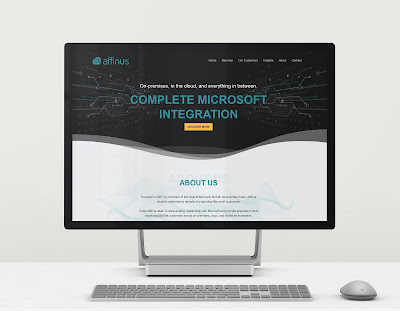In this post I am telling about your all Question's Answer like - what is computer || what is computer network || what is computer system || what is computer virus || What is the Full-Form of PC
 |
| What is computer |
Computer
A PC is a contraption that recognizes information (as digitalized data) and controls it for some result subject to a program, programming, or gathering of headings on how the data is to be handled. It's also called PC (Personal Computer).
Complex PC incorporate the methods for putting away information (counting the program, which is likewise a type of information) for some vital term. A program might be constant and incorporated into the PC equipment (and called rationale hardware all things considered on chip) or various projects might be given to the PC (stacked into its stockpiling and afterward began by a head or client). The present Computers have the two parts of programming.
"You are learning about computer in techno agaaz"
Significant types of Computers
Analog Computer
Addresses information by quantifiable amounts
Desktop Computer
A PC that fits on a work area and is regularly used for business or gaming
Digital Computer
Works with numbers communicated as digits
Hybrid Computer
Joins highlights of both simple and Advanced Computers
Laptop (Notebook)
An effortlessly shipped PC that is more modest than a satchel
Mainframe (huge iron) Computer
A unified PC used for enormous scope registering
Microcomputer
For the most part alluded to as a (PC). Utilizations a solitary coordinated semiconductor chip microchip.
Minicomputer
An outdated term for a PC that is more modest than a centralized server and bigger than a microcomputer
Netbook
A more modest and less ground-breaking rendition of a PC
Personal Computer (PC)
An advanced PC intended to be utilized by each individual in turn
 |
| Personal computer |
Cell phone
A cell phone planned with an incorporated PC
What is Supercomputer
Supercomputer
A high performing PC that works at amazingly high rates
Tablet Computer (tablet PC)
A remote PC with a touch screen
Workstation
Gear intended for a solitary client to finish a particular specialized/logical assignment.
History of the advanced Computer
Most accounts of the advanced PC start with the Analytical Engine imagined by Charles Babbage following the numerical thoughts of George Boole, the mathematician who initially expressed the standards of rationale inborn in the present computerized PC. Babbage's associate and colleague, Ada Lovelace, is said to have presented the thoughts of program circles and subroutines and is now and again viewed as the principal developer. Aside from mechanical mini-computers, the primary truly useable PC started with the vacuum tube, quickened with the innovation of the semiconductor, which at that point got inserted in enormous numbers in incorporated circuits, at last making conceivable the generally minimal effort PC.
Current PC characteristically follow the thoughts of the put away program spread out by John von Neumann in 1945. Basically, the program is perused by the PC each guidance in turn, an activity is performed, and the PC at that point peruses the following guidance.
From the mid-1900s to the present, the headway of PC is separated into five ages. While the year range for every age differs relying upon the reference source, the most perceived generational course of events is beneath.
1. First Generation Computer (1940 to 1956)
 |
| First generation computer |
First Generation Computers were room-sized machines that used vacuum tubes for circuitry and magnetic drums for limited internal Storage. These machines utilized punched cards for Data input and binary machine code (language). Instances of first computer incorporate the ABC (Atanasoff Berry Computer), Colossus, IBM 650 and the EDVAC (Electronic Discrete Variable Computer).
2. Second Generation (1956 to 1963)
 |
| Second generation computer |
Second generation Computer supplanted vacuum tubes with semiconductors, utilized attractive tape stockpiling for storage capacity limit, used BAL (Basic Assembler language) and kept on using punched cards for input. Transistors drew less force and generated less heat than vacuum tubes. Instances of second generation Computers include the IBM 7090, IBM 7094, IBM 1400, and the UNIVAC (Universal Automatic Computer).
Third Generation (1964 to 1971)
 |
| Third generation computer |
Third Generation Computers utilized ICs (integrated circuits) with a few semiconductors and MOS (metal oxide semiconductor) memory. More modest, less expensive and quicker than their predecessor, these Computers utilized Keywords for input, Monitors for Output, and employed programming language, for example, FORTRAN (Formula Translation), COBOL (Common Business Oriented Language) and C-Language. Instances of third generation PC (Personal Computer) incorporate the IBM 360 and IBM 370 series.
Fourth Generation (1972 to 2010)
 |
| Fourth generation computer |
Fourth generation Computers used integrated circuits and microprocessors with VLSI (very large scale integration), RAM (Random access memory), ROM (read only memory), and very high level programming language including C and C++. The creation and development of the World Wide Web and cloud computing (the ability to delever hosted administrations using the Internet) significantly upgraded processing abilities during this period. Instances of fourth generation PC incorporate Apple's Macintosh and IBM's PC.
Fifth Generation (2010 and beyond)
 |
| Fifth generation computer |
Fifth generation PC depend on AI (Artificial Intelligence), utilize large scale integrated chips and more than one CPU (processor). Fifth generation Computer react to natural language input, take care of profoundly complex issues, settle on choices through legitimate (human-like) thinking and use quantum computing and nanotechnology (molecular manufacturing). Fifth generation Computers and projects permit different projects (and Computers) to chip away at a similar issue simultaneously in equal.
The appearance of the Internet, distributed computing, and high bandwidht data transmission empowers projects and data to be appropriated over a network fastly and productively, while application programs and software make Computers the tools of decision for such things as word programing, databases, bookkeeping pages, presentations ERP (enterprise resource planning), recreations, training, CMS (content management systems), gaming and designing.





0 Comments
If you have any problem let me know